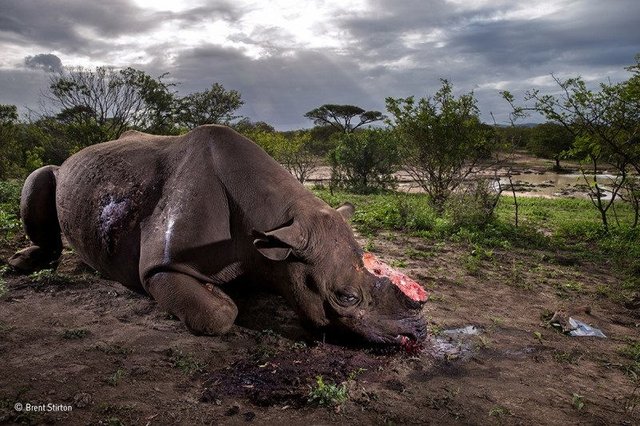This is the tragic winning image of Wildlife Photographer of the Year 2017

More than 1000 rhinos die every year from their horns. The illegal trade has mainly driven this drift by the false belief that the rhinoceros horn can cure ailments, from kidney stones to cancer. For the criminal syndicates that sell it, the profits are greater than for gold or cocaine
Photographer Brent Stirton has captured the image that leads this entry, and the Museum of Natural History in London has awarded the work Wildlife Photographer of the 2017.
Rhinoceros horn
The image was taken in the park of Hluhluwe-Imfolozi, in South Africa. In his series of photographs, Stirton also included volunteers who rescue the offspring of poached rhinos. Here below, Dorota Ladosz embraces Lulah, a one-month-old black rhino whose mother was killed in Kruger National Park. A group of hyenas bit the baby's ears and badly injured his legs. She was taken to the Care for Wild Africa rhino orphanage to be rehabilitated, hoping to return her to nature.

The so-called white gold move each year more than 200 million dollars across the African continent. Rhino horns are particularly prized in the Far East, where they are reduced to dust and, after being ingested, not only improve virility, but also presumably combat headaches and fevers.